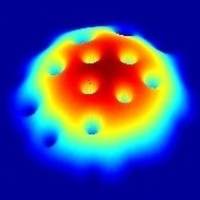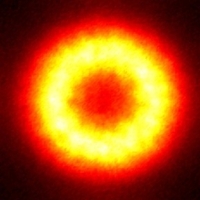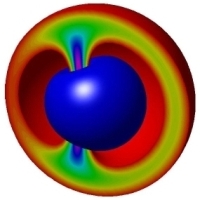|
|||||
|
|
|||||
 |
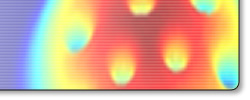 |
|||||||||||||||||||||||||||||||||||||||||||||||||||||||||||||||||||||||||||||||||||||||||||||||||||||||||||||||||||||||||||||||||||||||||||||||
Scholarships and Further Information
Field Theory and Quantum Correlations -- theory
|
||||||||||||||||||||||||||||||||||||||||||||||||||||||||||||||||||||||||||||||||||||||||||||||||||||||||||||||||||||||||||||||||||||||||||||||||
| ANU | Dr Joseph Hope <joseph.hope |
|
| Dr Craig Savage <craig.savage |
||
| Dr Elena Ostrovskaya <ost124 |
||
| UQ | Dr Joel Corney <corney |
|
| Dr Karen Kheruntsyan <kherunts |
||
| Dr Matthew Davis <mdavis |
||
| Prof Peter Drummond <drummond |
Scholarships and Further Information
For further details about the research project and information about PhD scholarships please contact one of the prospective supervisors or visit the respective webpages of the ANU Faculties, ANU IAS Node, or UQ Node of ACQAO.
Computational Physics and Quantum Simulations -- theory 

Recent pioneering experiments with ultracold atoms have opened up experimental regimes in which many-body quantum physics can be investigated with unprecedented simplicity and precision. Theoretical predictions can thus be tested to high accuracy. Although described by relatively simple models, except in special cases such systems cannot be solved analytically without serious approximations.
The accurate simulation of quantum many body systems is one of the great challenges of many body physics. Fermionic simulations, plagued by infamous Fermi sign problem, are particularly difficult. Quantum phase-space methods are a proven way of simulating interacting quantum systems. Originally developed to simulate optical systems, they are under development in the centre, by means of "stochastic gauges", alternative basis sets, and hybrid approaches, to tackle systems with stronger interactions (such as atoms) and to simulate fermions as well as bosons.
ACQAO has a strong program in computational physics. The in-house simulation package for stochastic PDEs, known as XMDS, is useful for many projects in the centre, and its extension to new types of problems is an active area of development. A new 64bit Linux cluster at the UQ node is available for researchers in the centre.
ACQAO PhD projects in this area cover:
- Novel simulation methods for fermions
- Dynamics of ultracold atoms in a lattices
- Stochastic gauges for stable quantum simulations
- Dynamics of BEC formation and vortices
Supervisors
| UQ | Prof Peter Drummond <drummond |
|
| Dr Joel Corney <corney |
||
| Dr Matthew Davis <mdavis |
||
| ANU | Dr Joseph Hope <joseph.hope |
|
| SUT | Prof Tien Kieu <kieu |
Scholarships and Further Information
For further details about the research project and information about PhD scholarships please contact one of the prospective supervisors or visit the respective webpages of the UQ Node, ANU Node, or the SUT Node of ACQAO.
Matter Waves in Lattices and Waveguides -- theory 
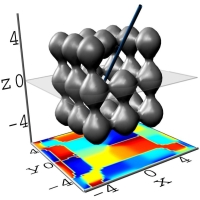
A dilute atomic gas at temperatures close to absolute zero can form a new state of matter - the Bose-Einstein condensate (BEC). Its experimental creation in 1995 was recognised by the Nobel Prize award in 2001. In a condensate, a macroscopic number of particles share the same quantum state. Hence the collection of atoms can behave coherently, as a single giant "matter wave".
A BEC loaded into periodic potentials created by interference of laser beams forms a perfectly ordered periodic "crystal", called an optical lattice. The dynamics of the coherent matter waves can then mimic the behavior of a single electron in a crystalline solid or a coherent wave of laser light in a periodic photonic structure ("photonic crystal"). The critical factors that make BECs in optical lattices remarkably different from both solid state and optical periodic structures are the inherent nonlinearity of the condensate due to atomic interactions and the tunability of the optical lattice potential.
This project will examine the effects that arise due to the interplay of the BEC nonlinearity and periodicity of the optical lattice. This study aims for a deeper understanding of links between the physics of superfluidity, condensation, and nonlinear atom optics.
The research program will include the study of:
- Nonlinear localization of multi-species BECs in lattices
- Formation and dynamics of topological defects (vortices)
- Condensate dynamics in lattices of nontrivial geometries
- Nonlinear effects in quasiperiodic and random lattices
- Atomic-molecular Bose gases in optical Lattices
Supervisors
| ANU | Prof Yuri Kivshar <ysk124 |
|
| Dr Elena Ostrovskaya <ost124 |
||
| Dr Tristram Alexander <tja124 |
||
| UQ | Prof Peter Drummond <drummond |
|
| Dr Matthew Davis <mdavis |
||
| Dr Joel Corney <corney |
||
| Dr Karen Kheruntsyan <kherunts |
||
| SUT | A/Prof Bryan Dalton <bdalton |
Scholarships and Further Information
For further details about the research project and information about PhD scholarships please contact one of the prospective supervisors or visit the respective webpages of the ANU Node, UQ Node, or the SUT Node of ACQAO.
Quantum Information and Quantum Optics -- theory 
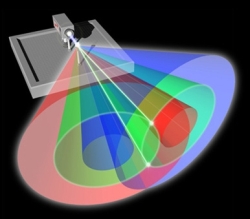
Entanglement and the failure of local realism make quantum mechanics quite different from classical mechanics. This is at the heart of such phenomena as the Einstein-Podolsky-Rosen paradox and the Bell inequalities. Open questions include how entanglement can be extended to multiple observers, what happens with macroscopic particle numbers, and whether quantum superpositions are affected by gravity.
There is a fundamental question here:
Can we test quantum mechanics in new regimes, including macroscopic systems and/or massive particles?
Potential applications are to precision measurements below the standard quantum limits.
ACQAO PhD projects in this area cover:
- Storage of optical quantum states in atoms via EIT
- Quantum simulations of pulse propagation in optical fibres
- Quantum state transfer between optical and BEC fields
- Multipartite entanglement and Bell inequalities
- Mesoscopic oscillators and light-matter entanglement
- Signatures of macroscopic coherence and entanglement for optical and spin squeezing
Supervisors
| UQ | Prof Peter Drummond <drummond |
|
| Dr Margaret Reid <margaret |
||
| Dr Murray Olsen <mko |
||
| ANU | Dr Joseph Hope <joseph.hope |
Scholarships and Further Information
For further details about the research project and information about PhD scholarships please contact one of the prospective supervisors or visit the respective webpages of the UQ Node or the ANU Node of ACQAO.
Coherence of a BEC on an Atom Chip -- experiment 

The combination of laser cooling and evaporative cooling techniques can freeze a cloud of atoms to such an extent that they undergo a phase transition to a new state of matter - a Bose-Einstein condensate (BEC). A remarkable property of a BEC is that all atoms in the ensemble are in a single quantum state and thus behave as a single "giant matter wave". Atom chips, or microfabricated atom optical elements on a substrate, provide an excellent platform for the coherent manipulation of matter waves and in particular for the production and quantum control of BECs.
The Swinburne Atom Chip project aims at the development of on-chip atom interferometers and investigation of decoherence effects associated with the macroscopic phase of a condensate. The scope of the project includes experimental and theoretical studies involving interactions of BECs with the environment, atom interferometry, applications of BECs for surface magnetometry and the development of on-chip single-atom detection and non-destructive measurements of BECs. Our current atom chip uses a combination of miniature wires and a permanent magnetic film to integrate a number of elements into a single device. We routinely produce from one up to sixteen condensates on the chip, which offers numerous opportunities for studies of "giant matter waves".
The project is a part of the ARC Centre of Excellence for Quantum-Atom Optics (ACQAO) and is very well equipped with top-performance lasers, a versatile computer control and a sophisticated imaging CCD system. It is also a part of the Centre for Atom Optics and Ultrafast Spectroscopy (CAOUS) and is located in the Swinburne Optics and Laser Laboratories (SOLL) complex. Our team has established international links with leading laboratories in Great Britain, Austria, Germany and Italy. ACQAO runs annual workshops, which encourage collaboration and interactions between PhD students and chief investigators across different universities.
Supervisors
| SUT | Prof Andrei Sidorov <asidorov |
|
| Prof Peter Hannaford <phannaford |
||
| Dr Brenton Hall <brhall |
Scholarships and Further Information
For further details about the research project and information about PhD scholarships please contact one of the prospective supervisors or visit the webpage of the SUT Node of ACQAO.
Atom Laser -- experiment 
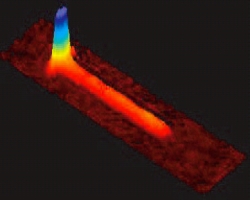
Ultra-cold atoms form matter waves that can be diffracted, interfered, squeezed and polarised. Because atoms have mass and a high self-nonlinearity, many measurements, and the technology based on them, can be improved by using atoms.
The key to future applications is the development of the atom laser, a fully coherent atomic beam derived from a Bose-Einstein condensate. An atom laser is as different from a normal atomic beam as an optical laser is different from a light bulb. The development of the atom laser is one of the major goals of the Australian Centre for Quantum Atom Optics. Our group is well funded and has excellent contact and exchange with international groups in Europe and the US. We are looking for highly motivated students who can take full advantage of the nationally and internationally collaborative research environment that we offer.
Our experimental program is aimed at, but is not limited to, answering the following questions:
- Can we maximise pumping and minimise the line-width of an atom laser by manipulating the scattering length of Bose condensed atoms?
- How can we measure the quantum field of an atom laser and a BEC?
- Can we build a measurement device based on an atom laser and how well will it perform compared to existing technology?
Supervisors
| ANU | Dr John Close <john.close |
|
| Dr Nick Robins <nick.robins |
Scholarships and Further Information
For further details about the research project and information about PhD scholarships please contact one of the prospective supervisors or visit the webpage of the ANU Faculties Node of ACQAO.
Metastable Helium BEC -- experiment 
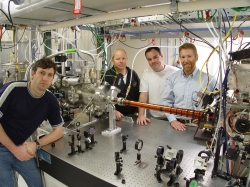
The 2001 Nobel prize in physics was awarded for the first demonstrations of Bose-Einstein condensation (BEC). These landmark experiments in physics realised a new state of matter in which the de Broglie wavelengths of ultracold atoms overlap to form a coherent, macroscopic quantum fluid with a single collective phase. It is this collective quantum mechanical phase that delineates a condensate atom from a normal thermal atom, indeed it is this phase that gives a condensate its remarkable properties.
In this experimental program we propose measuring the development of relative phase between two BEC's. This challenging project is made possible by using a BEC comprising atoms in an excited state. On striking a detector, these atoms release electrons which can be detected with very high efficiency, allowing single atom detection. This unique property of a He* BEC makes it the ideal candidate to probe the quantum mysteries of a BEC.
This project is part of the Australian Centre of Excellence for Quantum Atom Optics (ACQAO) and is well funded. Our team comprises a number of highly motivated staff members and students as well as excellent technicians. We also have close ties to theoretical physicists at the ANU and UQ nodes of ACQAO. We have a number of ongoing collaborations with groups in the Netherlands and France, and there exists the opportunity to visit these laboratories. Furthermore, ACQAO runs annual workshops which encourage interaction between students and staff across different universities.
Supervisor
| Dr Andrew Truscott <andrew.truscott |
Scholarships and Further Information
For further details about the research project and information about PhD scholarships please contact Dr Andrew Truscott or visit the webpage of the ANU IAS Node of ACQAO.
Quantum Imaging -- experiment 
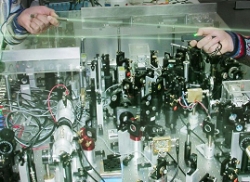
Tremendous progress has been made to use quantum concepts in optical communication. What used to be purely theoretical concepts, such as entanglement and duality of waves and particles, is now the guiding concept behind new technologies. Within ACQAO we combine the best lasers, nonlinear optics and high quality components with new original ideas of quantum correlations and multimode optics.
This project is concerned with exploring the limits of communicating spatial information, such as the direction and position of laser beam and eventually simple images. The possibilities of quantum imaging are just now emerging.
You will join a lively international team based at the ANU with collaborators across Europe and in the US. We have built unique experiments and will demonstrate the capability of this unique Australian approach [1]. The project is well funded and equipped and located in the new ACQAO laboratories at ANU. It offers the opportunity to produce exciting experimental results such as spatial entanglement and super resolution data storage.
You will work alongside students and researchers from France, Denmark and Germany and with supervisors (H.-A. Bachor, P. K. Lam, C. C. Harb) who are pioneers in this field [2]. The project is timed and planned 2006-2008 and successful candidates will have the chance to work later in leading laboratories in Europe. APA scholarships with financial top up for the best students are available via the ANU and ACQAO.
[1] N. Treps, N. Grosse, W. P. Bowen, C. Fabre, H.-A. Bachor, P. K. Lam. A quantum laser pointer. Science 301 , 940 (2003).
[2] H.-A. Bachor and T. C. Ralph. A guide to experiments in quantum optics (Wiley, 2003).
Supervisors
| ANU | Prof Hans Bachor <hans.bachor |
|
| Dr Ping Koy Lam <ping.lam |
||
| Dr Charles Harb <charles.harb |
Scholarships and Further Information
For further details about the research project please contact one of the prospective supervisors. Information about PhD scholarships at ANU can be found here.
Atom-Light Entanglement -- experiment 
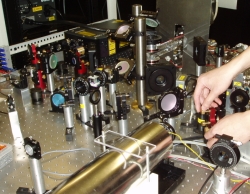
A full quantum network could be a future application of quantum optics. One crucial component missing to date is a memory or storage of quantum information. This research goal is followed by leading groups internationally and here at ACQAO.
The crucial tool we require is the ability to transfer quantum information from light to atoms and vice versa. We are already testing this by slowing light in a Rb vapour, using EIT, and by investigating how well quantum information can be delayed in time. For the first time we can show the quality of modulation in all quadratures before and after the Rb vapour. All these measurements can be done close to the quantum noise limit, and we are exploring qualities as signal bandwidth and delay time.
The project involves the design and building of better storage devices, combining ultra-cold atoms, Ti-sapphire laser, squeezed light sources and quantum noise limited detection. This project links new ideas, from across the Centre, with state of the art experimental technology. You will be joining a team of students and staff bringing experiences from different countries (France, Germany, US, ...) and you will work with a rapidly expanding team.
Supervisors
| ANU | Dr Ping Koy Lam <ping.lam |
|
| Prof Hans Bachor <hans.bachor |
Scholarships and Further Information
For further details about the research project please contact one of the prospective supervisors. Information about PhD scholarships at ANU can be found here.
Last updated: November 19, 2009
Designed and maintained by: Paul Schwenn (schwenn
Contents coordinator and supervisor: Karen Kheruntsyan (kherunts


